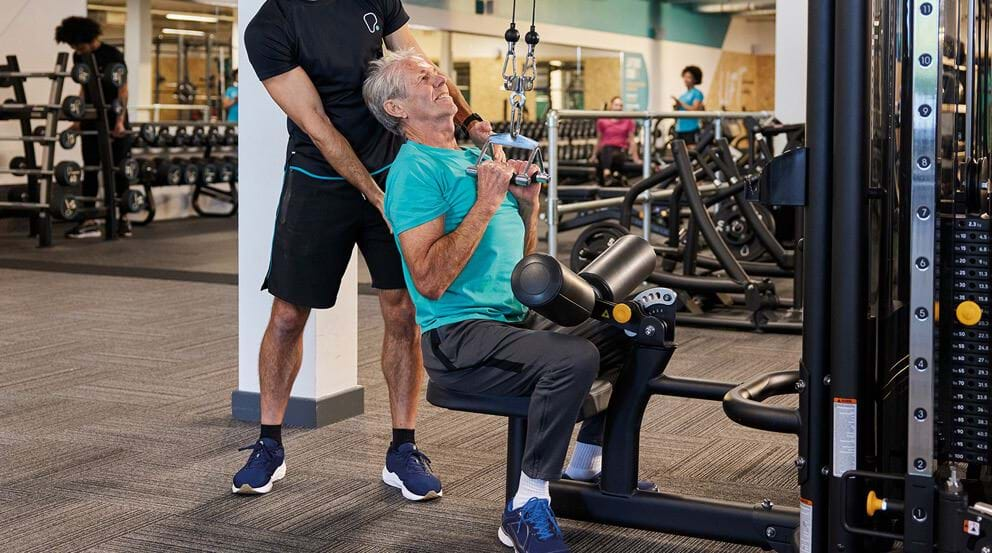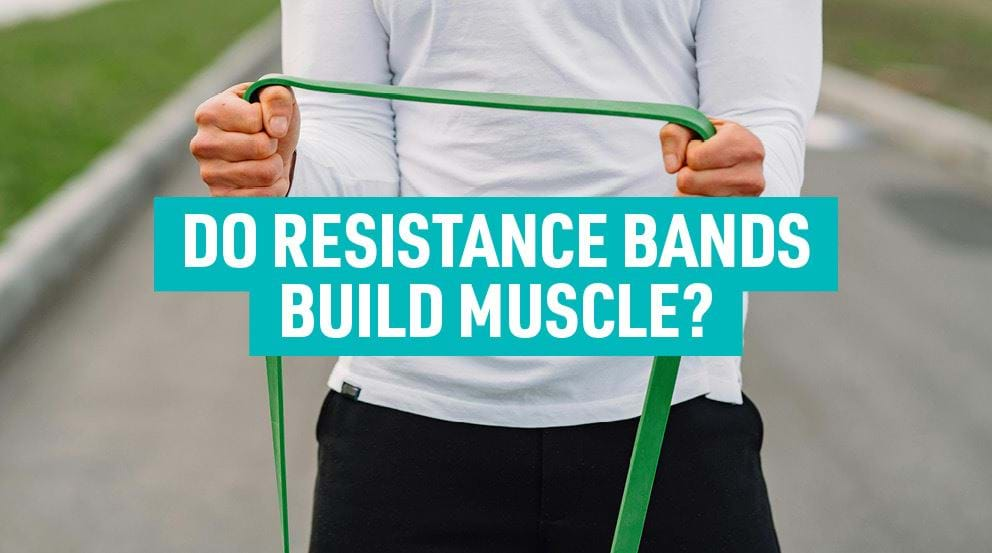A Beginner’s Guide to Cable Machines

Page last updated: 17th February 2022
For many gym goers, the cable machine is a mystery. Unlike with dumbbells and barbells, using a cable machine is not intuitive, so it often gets neglected in favour of other pieces of gym equipment.
Once you know how to use the cable machine, you won't look back. This bit of kit is extremely versatile - you could train your full body without leaving the machine if you wanted to! In this blog, we're debunking the cable machine and sharing some of our favourite cable machine exercises, plus an upper body cable machine workout.
Why should you use cable machines?
With so many options to choose from at a gym, you may be thinking why bother trying out the cable pulley machine. This piece of kit actually offers some unique benefits compared to working with free weights, so if you're serious about building strength and size, it's worth incorporating cable exercises into your routine.
Some of the benefits of using the cable pulley machine are:
- They provide constant tension. Unlike dumbbells or barbells, where there are certain points in the movement with less resistance (usually the top and bottom of an exercise), cable machines provide constant tension throughout the movement pattern. Increased tension means increased strength gains.
- You can change the direction of resistance. You know with free weights, one half of the exercise feels harder than the other (for example, the press in bench press)? That's because gravity impacts how much resistance a weight creates. With cable machines, the resistance is in the direction of the cable pull, not the center of gravity, so you can target any muscle, from any angle.
- **They're extremely versatile. **Pretty much every aspect of a cable machine can be adjusted: the height, handle, weight, direction... This means you can do almost any exercise, from any angle, to work muscles however you want to.
- It works your core and stabilising muscles. Most cable machine exercises are carried out standing up, which means your core and smaller stabilising muscles are working hard to keep you and your movement steady.
- It's safe. Cable machines are a really safe piece of equipment, as there's no risk of dropping weights.
How Does the Cable Machine Work?
The cable machine works in the same way as any strength building device; by providing resistance for your muscles to work against.
The only real difference between this and other machines or equipment, is that, in this case, weights are connected to cables via a set of pulleys. You train by moving the cables around, while they stay under constant tension against the weights. This means that your muscles are also under constant tension during an exercise. There is no "resting point" here, unlike with free weights.
Typically, there are two weight stacks, connected to two cables, with space in between for you to stand and train. Two outer pulleys will be adjustable so that the cable attachments can be fixed at different heights.
This allows you to do a surprising amount with the machine. You can pull the cables in pretty much any direction and still be working against the same resistance. Combine this with the different cable attachments available, and you're pretty much only limited by your own creativity.
Beginner Cable Machine Exercises
It can be difficult to know where to start when trying out a piece of kit this versatile, so we've shared 3 cable machine exercises to try out below. We've also shared an upper body cable machine workout you can follow to build serious upper body strength.
Standing Cable Chest Press:
The standing cable chest press is a great exercise to work your pecs, shoulders, triceps and even abs. Think of it as the cable press version of a standard dumbbell press.
Carrying out this exercise is simple. The first thing to do is to set the two adjustable pulleys to about chest height. Then, make sure there's an appropriate handle attachment on each pulley, and set your desired weight on each side (making sure both sides match).
Then, take hold of each handle, face away from the machine, and step forward until you feel tension in the cables, and the weights "un-rack" from their stacks.
Next, simply push the handles out in front of you for reps, like you would with a bench or dumbbell press. You'll notice that the movement feels much harder to stabilise than most free-weight movements. That's just a sign it's working as intended.
Standing Cable Row:
The standing cable row is great for working the muscles of the upper back, specifically the lats. It will also put some decent tension on the biceps.
To setup the exercise, begin by fitting the rowing attachment (which will include two handles) to one cable. Set the weight, take hold of the attachment while facing the machine, and take a few steps back with your knees slightly bent and your arms held straight out in front of you, until the weight unracks.
From there, it's as simple as pulling the attachment back to the middle of your chest for reps. Your shoulder blades should be retracted during the motion.
Cable Machine Squat:
This exercise is a bit unconventional, but can do a fantastic job of working the muscles of your legs without the risks that come from having a heavy bar with a tonne of weight resting across your upper back.
There are different ways of doing this exercise, but here's one of the simplest:
Fix a straight bar attachment to one cable of the cable machine. Set the pulley to the lowest setting. Hold the bar in both hands, with an overhand grip, and step back until the cable is taught. Then, drop down and back into a low squat.
From there, press back up and slightly "out", engaging the lower body muscles, and repeat for reps.
Upper body cable machine workout
For this cable machine workout, complete 3-4 sets of each cable machine exercise with 30-45 seconds rest between each set.
- Cable row
- Cable shoulder press
- Cable fly
- Lat raises
- Bicep curl
- Tricep overhead extension
Need more exercise inspiration? Some of our favourites are this cable only back workout and upper body workout using dumbbells.
We also have 600+ workouts available on the free PureGym App - and you don't have to be a member to access these! If you're ready to join, find your nearest gym here.


